class: center, middle, inverse # The Design Thinking Process ## It starts with empathy _J. Hathaway_ ??? --- class: left, middle, font40 # Agenda 1. On Personality Quizzes 2. Introduction to Design Thinking 3. Deep Dive into Empathy 4. Introduction to project 1 5. Establish teams --- class: center, middle, inverse # Do we have personality types? --- class: left, middle # The bads > But the test was developed in the 1940s based on the totally untested theories of Carl Jung and is now thoroughly disregarded by the psychology community. [Vox.com](https://www.vox.com/2014/7/15/5881947/myers-briggs-personality-test-meaningless) > This isn't a test designed to accurately categorize people, but rather a test designed to make them feel happy after taking it. This is one of the reasons it's persisted for so many years in the corporate world after being disregarded by psychologists. [Vox.com](https://www.vox.com/2014/7/15/5881947/myers-briggs-personality-test-meaningless) > Until we test them scientifically, we can’t tell the difference between that and pseudoscience like astrology. [Scientific American](https://www.scientificamerican.com/article/how-accurate-are-personality-tests/) > Interestingly, more recent research shows that 90% of people want to make changes in their personalities. As people, we want to improve ourselves. But non-scientific theories like Briggs' can lead people to believe they literally can't change, because their "core" attributes or "type" is inflexible. Hence, type-based tests that create a label can also create a fixed mindset. [Business Insider](https://www.businessinsider.com/most-personality-tests-junk-science-make-you-cling-to-label-2020-7#:~:text=Type%2Dbased%20personality%20tests%20like,about%20yourself%20and%20other%20people.) - [Five myths about personality tests](https://www.washingtonpost.com/outlook/five-myths/five-myths-about-personality-tests/2018/09/20/3a57a8ee-b78a-11e8-a2c5-3187f427e253_story.html) --- class: left, middle # The goods > Because of their widespread use by employers and HR departments, personality tests have colonized and commodified the individual psyche. [Washington Post](https://www.washingtonpost.com/outlook/five-myths/five-myths-about-personality-tests/2018/09/20/3a57a8ee-b78a-11e8-a2c5-3187f427e253_story.html) > The most popular — used by the vast majority of scientists who study personality — is called the Big Five, a system that organizes personality around five broad clusters of traits: extroversion, agreeableness, conscientiousness, neuroticism and openness to experience. [fivethirtyeight](https://fivethirtyeight.com/features/most-personality-quizzes-are-junk-science-i-found-one-that-isnt/) - [PersonalityLab.org](http://www.personalitylab.org/) for the Big Five test - [How universal is the Big 5](https://www.ncbi.nlm.nih.gov/pmc/articles/PMC4104167/) - [16personalities validation](https://www.16personalities.com/articles/reliability-and-validity) --- class: center, top # Don't let them define your life, but they can help you think 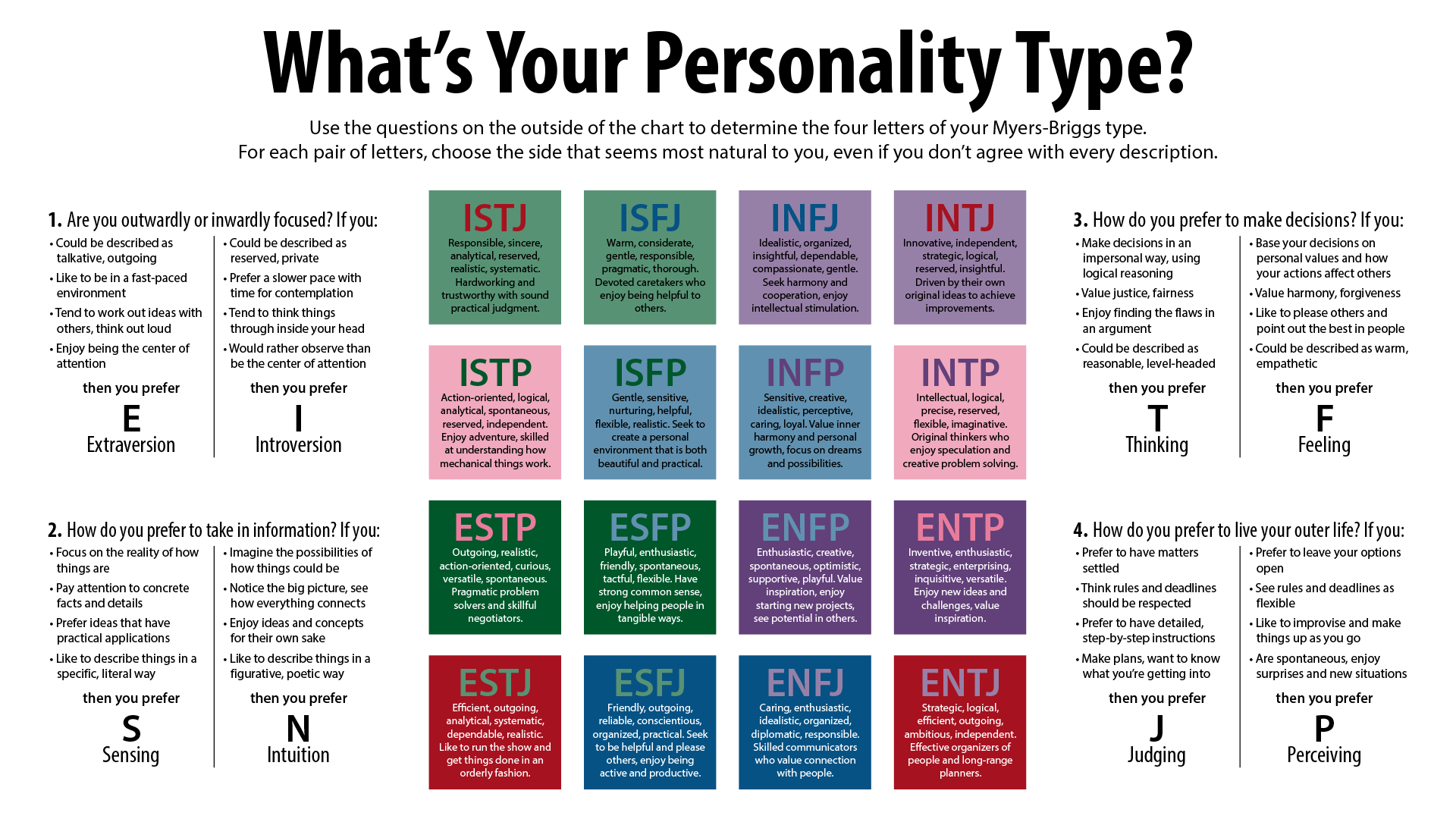 --- class: center, middle, inverse # What is Design Thinking? ## An overview of a novel environment for project design > Inspiration > Ideation > Implementation > Empathize > Define > Ideate > Prototype > Test __Invitation: As we move through the next 20 minutes, please ponder why this needs to be taught and why empathy is foundational in starting the process.__ --- # Human-centered Design (aka Design Thinking) [What is Human-centered Design?](https://vimeo.com/106505300) from [IDEO.org](https://vimeo.com/ideoorg). <iframe src="https://player.vimeo.com/video/106505300?title=0&byline=0&portrait=0" style="position:absolute;top:30;left:30;width:70%;height:60%;" frameborder="0" webkitallowfullscreen mozallowfullscreen allowfullscreen></iframe> <script src="https://player.vimeo.com/api/player.js"></script> --- class: left, middle, font40 # The original process > Design thinking seeks to identify needs rather than solve problems. [ref](https://medium.com/startup-grind/build-customer-empathy-by-listening-to-their-stories-38b5df9337aa) 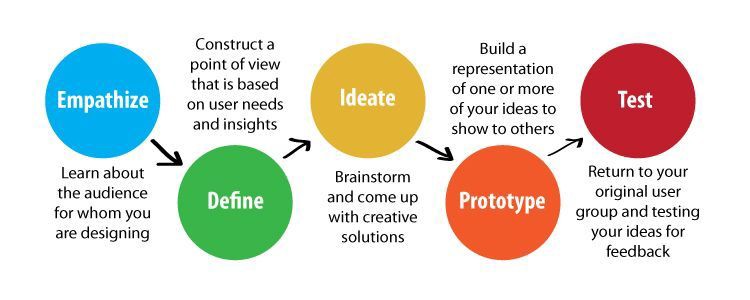 --- class: left, middle, font40 # The simplified process ### For the next 2-weeks, we stay rooted in __Inspiration__. 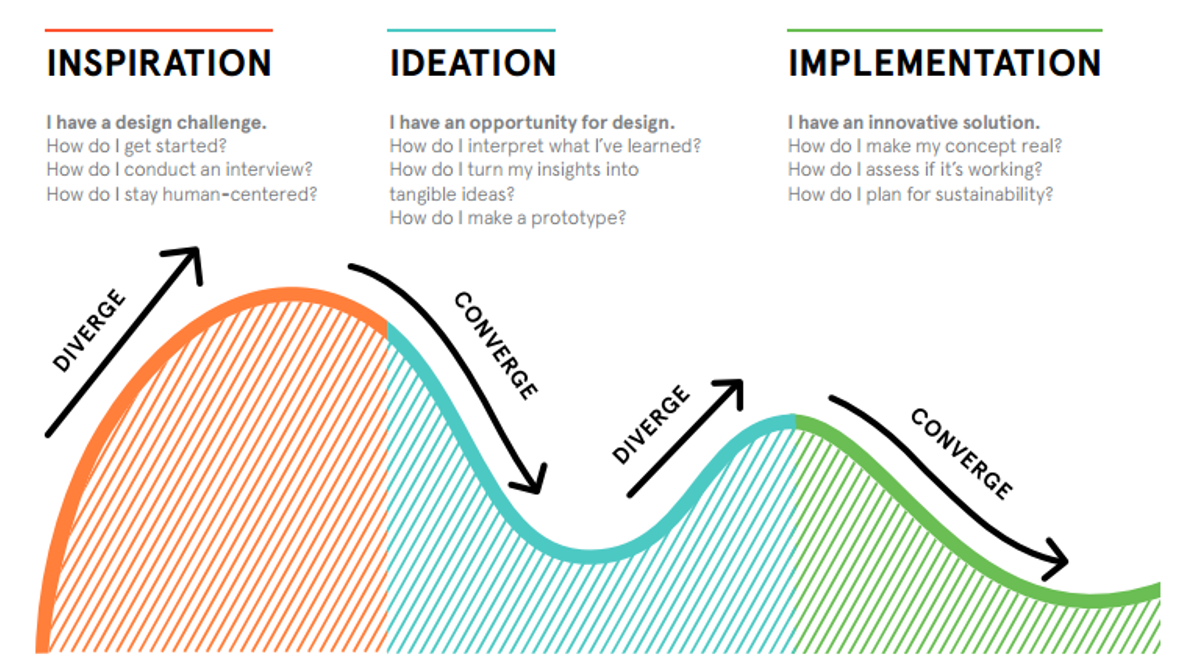 --- class: left, middle, font40 # Other ways to tell the story ### Look at each image and explain what different messages the varied diagrams portray. [Other visuals](https://github.com/byuibigdata/course_guide/blob/main/design_thinking_agile.md) --- class: left, middle, inverse # What is Empathy? ## the ability to be aware of, understanding of, and sensitive to another ## person’s feelings and thoughts without having had ## the same experience. [ref](https://5a5f89b8e10a225a44ac-ccbed124c38c4f7a3066210c073e7d55.ssl.cf1.rackcdn.com/files/pdfs/news/Empathy_on_the_Edge.pdf) --- class: left, middle # Understanding our need space __Statistics:__ This field would say that you need to take a _random_ sample of the group you wish to understand. __Data Science:__ Measure everything we can about people (track phones, purchases, friends, etc.) and use models to predict them. __Business:__ Build a survey and send it to your customers. __Empathetic Interviewing:__ Seek the extremes of the population and genuinely talk to them. > In our fieldwork we look for diverse people and situations to promote empathy, which we internally refer to as “extremes.” These mostly ordinary people with extreme points of view—owing to their personality, circumstances, or culture—provide a broad range of experiences and well-developed perspectives that would be harder to identify if we looked at a random sample of individuals representing a range of the target demographics. [ref](https://5a5f89b8e10a225a44ac-ccbed124c38c4f7a3066210c073e7d55.ssl.cf1.rackcdn.com/files/pdfs/news/Empathy_on_the_Edge.pdf) --- class: left, middle # Hearing stories through interviews > Remember, you’re not trying to solve problems here; you’re just looking for the needs, driven by what users say or do, and by what users think or feel. > Empathizing with the people you’re designing for is the best route to truly grasping the context and complexities of their lives. But most importantly, it keeps the people you’re designing for squarely grounded in the center of your work. 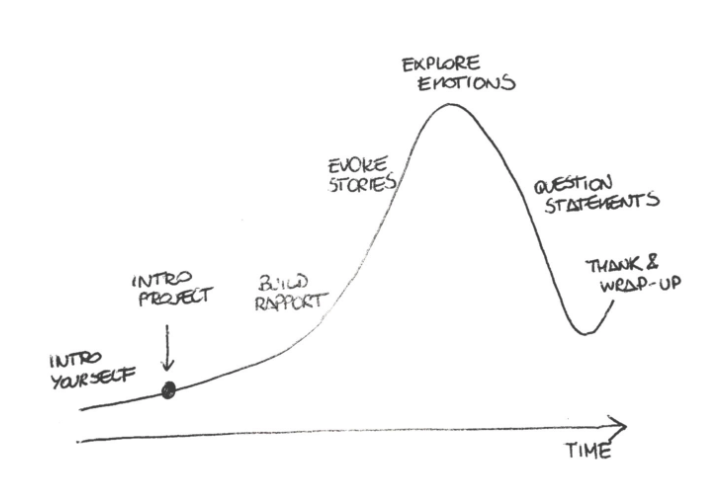 - [Build customer empathy by listening to their stories](https://medium.com/startup-grind/build-customer-empathy-by-listening-to-their-stories-38b5df9337aa) --- class: left, middle # Create Personas > Personas are fictional characters, which you create based upon your research in order to represent the different user types that might use your service, product, site, or brand in a similar way. Creating personas helps the designer to understand users’ needs, experiences, behaviors, and goals. - [What are Personas?](https://www.interaction-design.org/literature/topics/personas#:~:text=Personas%20are%20fictional%20characters%2C%20which,%2C%20experiences%2C%20behaviors%20and%20goals.) Let's watch the first four minutes of the video. --- class: center, middle # What are your takeaways about empathy in design thinking? 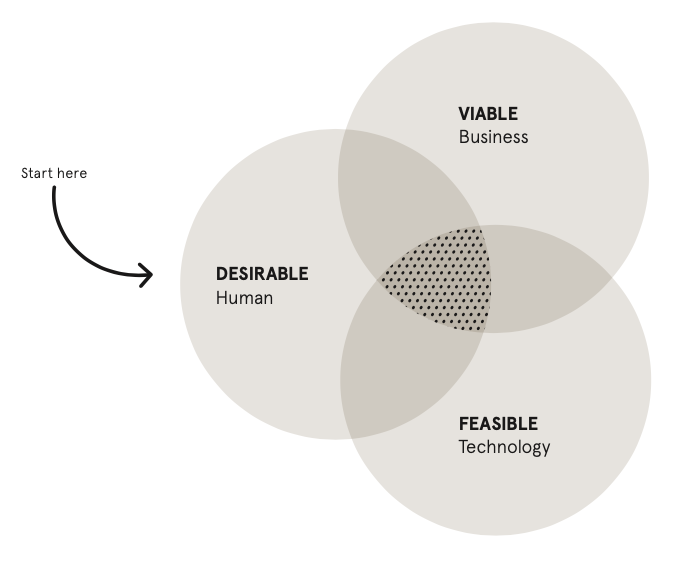 --- class: center, middle, inverse # Project 1: Educate on Education ## Learning workforce skills through the incorporation of ## novel class _structures_ beyond the traditional classroom [Details on our education challenge](../projects/p1.html) --- class: left, middle, inverse # Let's meet our groups 1. Move into new teams based on our assignments 2. Create a team name and get into your team's Slack channel 3. Type a short introduction about yourself in the channel and add your picture to your profile.